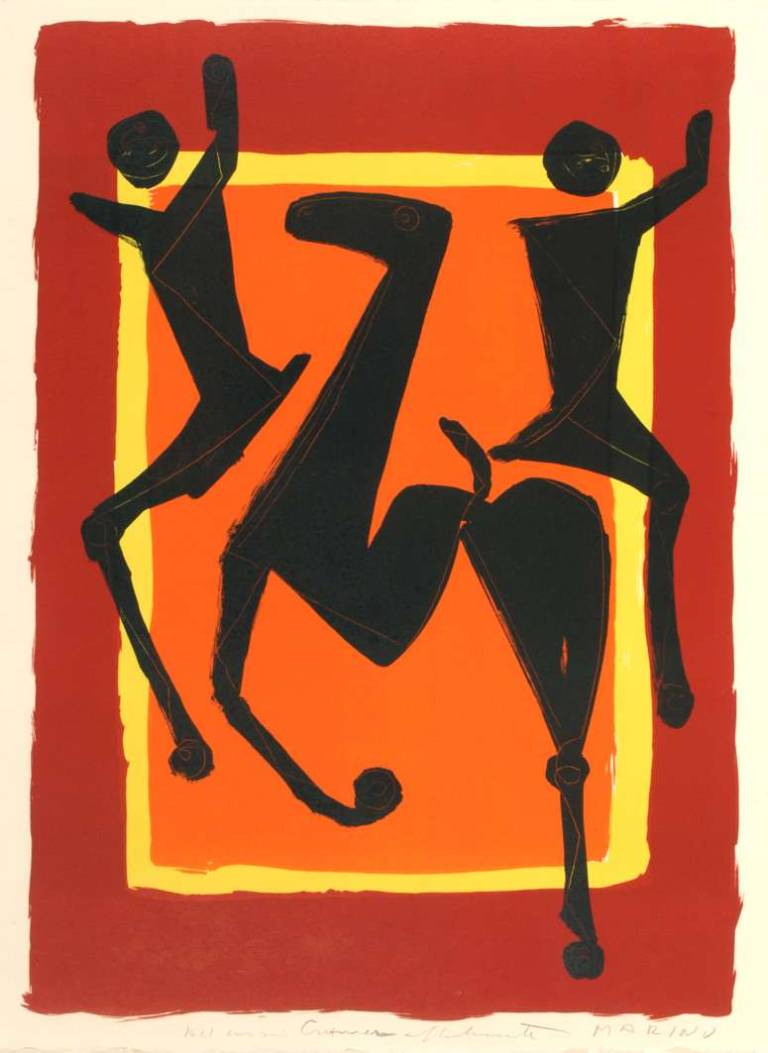Marino MariniGiocolieri – Jongleurs. Acrobat Riders. 1954-55.
- 66.5 x 50.5 cms (26.18 x 19.88 ins)
- Ref: 676753/19745
Original lithograph in four
colours. 1954-55. Signed in pencil and numbered from the edition of 50 (plus 6
artist’s proofs). Drawn by Marini and printed at the Atelier Mourlot, Paris
1955. Edition issued by Gerald Cramer Zurich and Berggruen, Paris. 1955.
Reference: Guastalla – Marini
Opera Grafica L 48. San Lazzaro - Marini L’Oeuvre Gravé The
Lithographs no 56. Recorded
by Berggruen as no 56.
Provenance:
Baron Henri Petiet Collection. Acquired for that collection in the 1950’s direct
from Berggruen. With the Petiet
collection mark on the reverse.
Very
fine strong impression with exceptionally brilliant colours. On pale cream wove
Arches paper. The full sheet. Sheet: 66.4 x 50.8 cm. Image: 63 x 44 cm. 24 ¾ x 17
/4 ins.
An
extremely fine example of Marino Marini’s work in colour lithography from his
most influential and creative period in the 1950’s.
Marino
Marini was one of the leading avant-garde Italian artists of the mid 20th
century. His imagery, largely expressed through the motif of ‘horse and rider’,
and concerning the interaction between man and nature, is amongst the most significant
of that era. It is also a significant precursor
to our 21st century concerns about the natural world and climate.
Marini
saw that the relationship between the nature of the horse and the needs of the
human rider was sometimes one of harmony and at other times a source of strife.
He felt that it was an expression of the on-going conflict between the human
desire to control nature and the absolute need to preserve it in its natural
form.
‘Giocolieri
– Acrobat Riders’, here, expresses Marini’s ideas and concerns to the full.
Marini
first worked in the medium of lithography as early as the 1940’s – but at that
period only in monochrome black and white. In the early 1950’s he sought to
learn the way that colour could be introduced, first at the Kratz Studio of the
L’Oeuvre Gravé association in Zurich and then at the L’Oeuvre Gravé studio in
Paris. It was his Paris dealer, the very influential Heinz
Berggruen, who introduced him to Mourlot. The association and the access to the facilities
of that great lithography studio gave Marini a new force of imagery which is
very apparent in this 1955 work.
